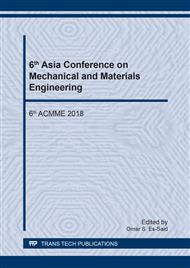p.181
p.189
p.194
p.200
p.206
p.212
p.217
p.222
p.227
Interaction Energy in a Suspension of Gypsum and Dispersed Limestone
Abstract:
The article describes results of the determination of the interaction energy between particles of a hydrating binder and filler, a solution and base. It was found that in the case of particles having a diameter of 17 μm, a mineral suspension should be practically stable, since the energy barrier is much higher than the thermal motion energy of the particles and is 166 kT (100% gypsum), 125 kT (100% CaCO3), 63 kT (gypsum-filler 90:10), and 41kT (gypsum-filler 80:20). A further increase in the amount of CaCO3 particles leads to a significant reduction in the barrier, which at the gypsum-to-filler ratio of 70:30 is 6 kT, and at the ratio of 50:50 completely disappears. In the interaction of the smallest particles (5 μm), the energy barrier values are: 44 kT (100% gypsum), 28 kT (100% CaCO3), 18 kT (gypsum-filler 90:10), 7 kT (80:20) and 2 kT (70:30). With the component ratio of 50:50, the energy barrier completely disappears, and the particles become denser in the first potential well.
Info:
Periodical:
Pages:
227-231
Citation:
Online since:
October 2018
Keywords:
Price:
Сopyright:
© 2018 Trans Tech Publications Ltd. All Rights Reserved
Share:
Citation:


